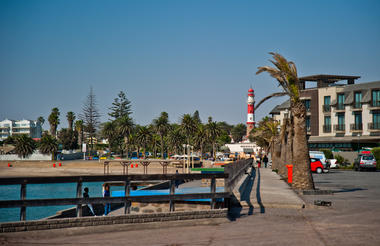With its well-developed infrastructure, some of the best tourist facilities in Africa and an impressive list of breathtaking natural wonders, touring Namibia is truly a pleasure. Visit the capital of Windhoek and the lovely coastal town of Swakopmund to discover remnants of the country’s German influence, reflected in the architecture, culture, cuisine and the annual Oktoberfest celebrations. To properly appreciate this extraordinary country, you will have to venture out of the cities to explore the remarkable natural landscapes Namibia has to offer. These include: the impressive Fish River Canyon Park; the vast Etosha National Park teeming with local subspecies, such as desert lions, desert elephants and the Hartmann's Mountain Zebra; the hauntingly beautiful Kalahari Desert; and of course the Namib Desert stretching for nearly 1000 km along the magnificent Atlantic coastline. Namibia is an ideal destination for travellers seeking an unforgettable African experience in a uniquely beautiful untamed wilderness.
Namibia’s capital, Windhoek, is a cosmopolitan city with an abundance of restaurants, shops, entertainment venues and accommodation. Windhoek is clean, safe and well-organised. The city centre is an interesting architectural mix of historical and modern buildings. The colonial legacy is still alive in its many German eateries and shops and the fairly widespread use of the German language.
City centre sights within easy walking distance: the Alte Feste (Old Fortress) museum; Christuskirche (Christ Church), consecrated in 1910; Tintenpalast (built in 1912/1913 as the seat of the colonial government and nicknamed Ink Palace), which is part of the parliamentary complex; the massive Independence Memorial Museum and the imposing contemporary building of the Supreme Court.
The international airport is 40 km east of Windhoek.
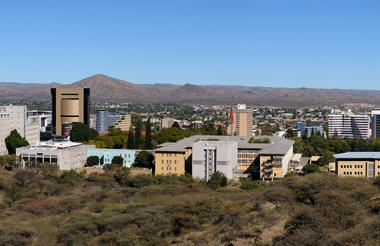
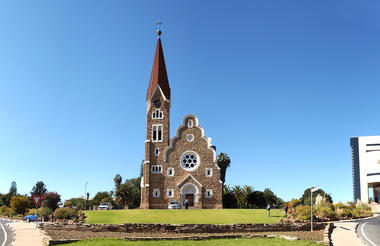

The Kalahari Basin covers most of Botswana and large parts of Namibia and South Africa. The name Kalahari means 'the great thirst' and describes the world’s largest continuous area of sand. It is an exceptionally beautiful semi-desert. In Namibia it is characterised by red dunes, acacia trees and wispy, mostly golden grass. The wide variety of wildlife includes gemsbok, impala, jackal and cheetah, not to forget the famous Meerkat. In all three countries the Kalahari is the last bastion of the indigenous San people who lived as hunter-gatherers in the whole of southern Africa before the modern world started to take over.


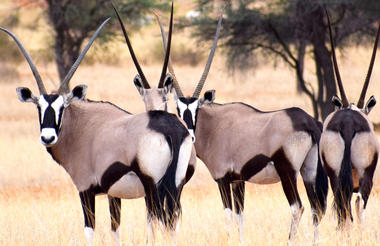
The desert town of Solitaire, in the south-western Khomas Region of central Namibia, is like a small oasis. There is not much to do or see in this tiny village, other than stop for refreshments and filling up with petrol. Solitaire boasts the only petrol station, general store and post office between Sossusvlei and Walvis Bay. There is also a small bar and a bakery famous for its apple pie – said to be the best in the country – as well as a luxury lodge, a motel and a campsite.
Activities: Enjoy a scenic sundowner with spectacular views of the Namib Desert; take time for a hike; go biking through unspoilt natural scenery; visit the local cheetah sanctuary.
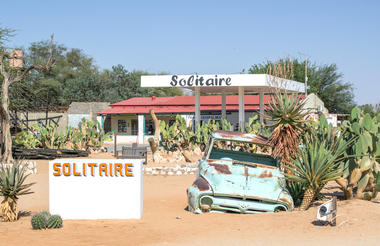
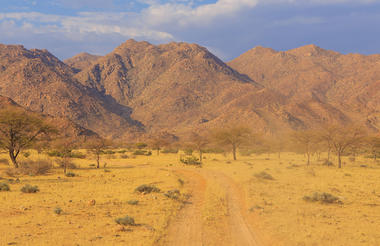
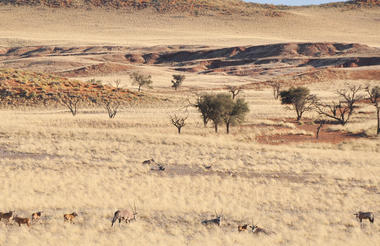
As previously described

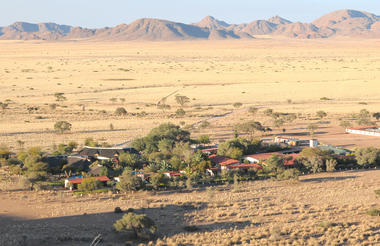
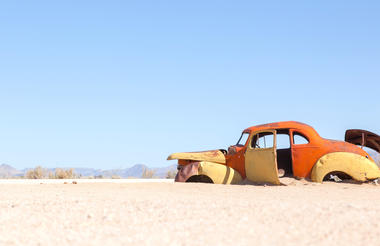
In 1892, eight years after South West Africa was declared a German Protectorate, Swakopmund was founded with the intention to build a harbour. By 1907 a little town pulsating with life had emerged from the desert! Swakopmund boasted the largest European population of all the German colonies in Africa. Decades on and much bigger now, the charming town is as alluring as ever. The mix of Namibian influences with picturesque buildings from the colonial era, palm-lined streets and seaside promenades, the laid-back holiday atmosphere plus the cool sea breeze make Swakopmund one of the most attractive places in the country.
Despite the turquoise waters of the Atlantic Ocean on its doorstep and the Namib Desert as its backyard, Swakopmund is not a tropical sunbathing paradise, however. The moderate climate along the coast is due to the cold Benguela Current. The current also causes the nightly fogs for which the town is famous and which sustain the wealth of desert flora and fauna near the coast. Early mornings and the evenings can be chilly throughout the year – a welcome respite from the inland heat.
Swakopmund has become the country’s adventure mecca. The desert, the dunes and the ocean lend themselves to a host of thrilling activities: sandboarding, sand skiing, quad biking, dune carting, beach angling and deep sea fishing, to name but a few, and not to forget parachuting.
There is no shortage of diverse shops, bistros and restaurants. Small specialist shops sell hand-made leather work, art & crafts, hand-woven carpets and wall hangings, hand-embroidered bed and table linen and other items proudly made in Namibia. Superb jewellery, designed and crafted with local gemstones by master goldsmiths, are another special feature of Swakopmund.
Activities other than fun in the sand and the sea: visit the art galleries and buy contemporary Namibian art and crafts; visit the museum to learn about Swakopmund’s history; join a tour of Karakulia Weavers and watch karakul wool being spun and woven into wall hangings and rugs; admire the world's largest quartz crystal cluster and other mineral treasures at the Kristall Galerie.
